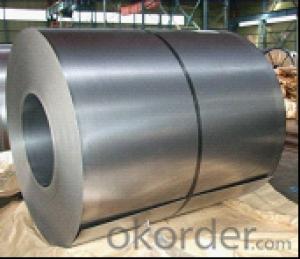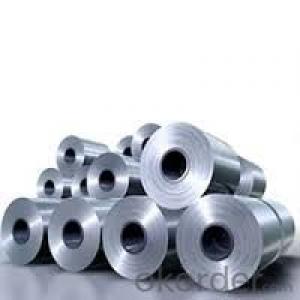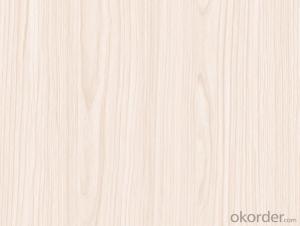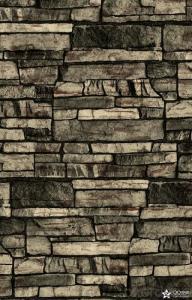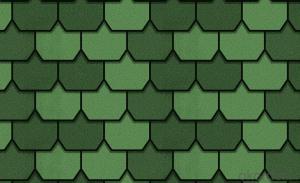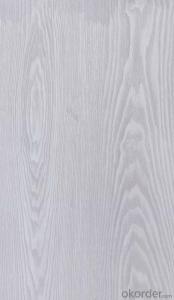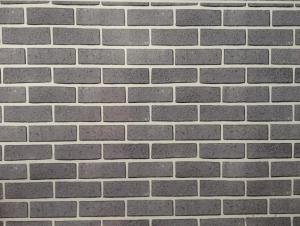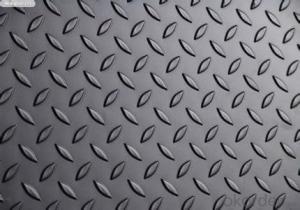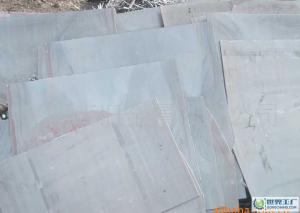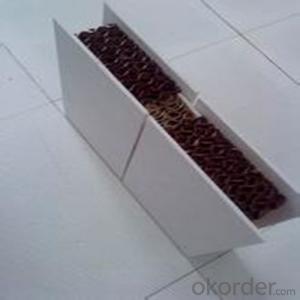color bond surface coating steel plate--XY006
- Loading Port:
- China Main Port
- Payment Terms:
- TT OR LC
- Min Order Qty:
- -
- Supply Capability:
- -
OKorder Service Pledge
OKorder Financial Service
You Might Also Like
1. Color bond surface coating steel plate :
2.More than ten years experiences, the products are sold to the domestic city and some international cities we strivc to develop production of color coating steel plate the plating (aluminum )zinc steel. Coil cheickness between 0.6mm and 1.5mm and the width from 600mm to 1250mm and a variety of high durability of color coating steel plate.
3The company has multiple layer patterns for customers to choose The company provides products deep processing services ,meet the various needs of customers on board specifications All of out products comply with international quality standards and are greatly appreciated in a variety of different markets throughout the world.
4.If you ate interested in any of our products or would like to discuss a custom order please feel free to contact us we are looking forward to forming successful business relationships with new clients around the world in the near future.
5.We can design the color and thickness according to customers' requirements. The delivery time is only 30 day after you confirm the order.
- Q: What is the typical elongation of a steel sheet?
- The typical elongation of a steel sheet can vary depending on the specific grade and thickness of the sheet. However, as a general guideline, the typical elongation for a steel sheet can range from 20% to 40% before it reaches its breaking point.
- Q: What is the difference between a self-color and painted steel sheet?
- A self-color steel sheet is one that has not undergone any additional surface treatment or coating, whereas a painted steel sheet has been coated with a layer of paint or another protective coating to enhance its appearance and provide added protection against corrosion or other environmental factors.
- Q: What are the different alloying elements used in steel sheets?
- There are several alloying elements used in steel sheets to enhance their properties and performance. Some of the commonly used alloying elements include: 1. Carbon: The most important alloying element in steel, carbon provides strength and hardness to the material. It also improves the steel's ability to be heat-treated, making it suitable for various applications. 2. Manganese: Manganese is commonly added to steel sheets to improve their mechanical properties, such as strength and toughness. It also helps in reducing the brittleness of the steel. 3. Chromium: Chromium is added to steel sheets to enhance their corrosion resistance. It forms a thin protective layer on the surface of the steel, preventing it from rusting or corroding easily. 4. Nickel: Nickel is often used in steel sheets to improve their toughness and resistance to impact. It also enhances the steel's ability to withstand extreme temperatures, making it suitable for high-temperature applications. 5. Silicon: Silicon is commonly added to steel sheets to improve their strength and hardness. It also helps in deoxidizing the steel during the manufacturing process. 6. Vanadium: Vanadium is used as an alloying element in steel sheets to improve their strength, toughness, and heat resistance. It also helps in refining the grain structure of the steel, making it more uniform and fine. 7. Copper: Copper is added to steel sheets to improve their corrosion resistance and thermal conductivity. It also enhances the steel's ability to be welded and brazed. 8. Tungsten: Tungsten is used as an alloying element in steel sheets to improve their hardness, strength, and wear resistance. It is often added in small amounts to enhance the steel's cutting and drilling capabilities. These are just a few examples of the alloying elements commonly used in steel sheets. The choice of alloying elements depends on the specific requirements of the application and the desired properties of the steel. Different combinations and concentrations of these elements can be used to achieve a wide range of characteristics in steel sheets.
- Q: What is the difference between a galvanized and aluminized steel sheet?
- Galvanized steel and aluminized steel sheets are both widely used in various industries due to their durability and corrosion-resistant properties. However, there are distinct differences between the two. Galvanized steel sheets are coated with a layer of zinc to protect the underlying steel from rust and corrosion. This process, known as galvanization, involves immersing the steel sheet in a bath of molten zinc or applying a zinc-rich coating through electroplating. The zinc layer acts as a sacrificial barrier, meaning that it will corrode before the steel does, providing excellent protection against rust. Galvanized steel is commonly used in outdoor applications, such as roofing, fences, and automobile parts. On the other hand, aluminized steel sheets are coated with a layer of aluminum-silicon alloy. This process, known as aluminization, involves hot-dipping the steel sheet in a bath of molten aluminum or applying a thin layer of aluminum-silicon alloy through a continuous hot-dip process. The aluminum-silicon coating offers excellent heat resistance and corrosion resistance. Aluminized steel is commonly used in applications where high temperatures are present, such as automotive exhaust systems, heat exchangers, and ovens. In summary, the main difference between galvanized and aluminized steel sheets lies in the type of coating applied to the steel. Galvanized steel is coated with zinc, providing excellent rust protection, while aluminized steel is coated with an aluminum-silicon alloy, providing superior heat and corrosion resistance. The choice between the two depends on the specific requirements of the application, such as the presence of high temperatures or the need for long-lasting rust protection.
- Q: What are the different edge treatments for steel sheets?
- Steel sheets can be treated with various edge techniques depending on the desired functionality and aesthetics. Some common treatments for steel sheets include: 1. Deburring: To enhance safety and prevent injuries during handling and installation, any burrs or sharp edges formed during manufacturing are removed. 2. Beveling: Creating a sloping edge on the steel sheet facilitates welding or joining multiple sheets. Beveled edges provide a smooth transition and strengthen the joint. 3. Chamfering: For a polished and finished look, a beveled edge is created on the steel sheet, primarily for aesthetic purposes. 4. Hemming: In the automotive and appliance industries, the edge of a steel sheet is bent back onto itself to create a safe and smooth edge, eliminating the need for additional finishing or edge protection. 5. Rolled edges: The edge of the steel sheet is bent in a curved or rounded shape to enhance structural integrity, reduce the risk of injury, and improve the overall appearance. 6. V-grooving: A V-shaped groove is cut along the edge of the steel sheet, commonly used for decorative purposes or to create a clean and precise joint when joining multiple sheets. 7. Flanging: The edge of the steel sheet is bent or folded at a specific angle to increase rigidity and strength, particularly in applications where the sheet needs to support weight or resist bending. Each edge treatment serves a specific purpose and should be chosen based on project requirements, considering factors such as functionality, safety, aesthetics, and ease of fabrication.
- Q: How are steel sheets stored and transported?
- Steel sheets are typically stored and transported in stacks or bundles, where they are secured using steel strapping or banding. These bundles are often stored in warehouses or outdoor storage yards, with appropriate spacing and support to prevent damage. When being transported, steel sheets are loaded onto trucks or shipping containers, ensuring they are properly secured and protected from external elements.
- Q: Can steel sheets be used in earthquake-resistant construction?
- Yes, steel sheets can be used in earthquake-resistant construction. Steel is a strong and durable material that has been widely used in seismic design and construction. Steel sheets can be used as structural elements in the form of beams, columns, and bracings, providing stability and strength to the building. Steel has several properties that make it suitable for earthquake-resistant construction. Firstly, steel is flexible and ductile, which means it can deform without breaking under the stress of an earthquake. This flexibility allows steel structures to absorb and dissipate seismic energy, reducing the impact on the building and minimizing damage. Additionally, steel has a high strength-to-weight ratio, which means it can withstand large forces while being relatively lightweight. This is beneficial in earthquake-resistant construction as it helps to reduce the overall weight of the structure, which in turn reduces the seismic forces acting on the building. Moreover, steel is a homogeneous material, which means it has consistent properties and behavior throughout its structure. This allows for accurate and predictable analysis and design of steel structures, ensuring that they can withstand seismic forces. Furthermore, steel structures can be designed and constructed with specific earthquake-resistant features, such as base isolation or energy dissipation devices, to further enhance their seismic performance. These features help to absorb and dissipate seismic energy, reducing the impact on the structure and improving its resistance to earthquakes. In conclusion, steel sheets can indeed be used in earthquake-resistant construction. Their flexibility, strength, and ability to dissipate seismic energy make them a suitable material for withstanding earthquake forces and ensuring the safety and stability of buildings in seismic areas.
- Q: What is the weight of a standard steel sheet?
- The weight of a standard steel sheet can vary depending on its dimensions and thickness. However, a commonly used gauge is 20, which has a weight of approximately 9.81 pounds per square foot.
- Q: Are steel sheets available in different grades of stainless steel?
- Yes, steel sheets are available in different grades of stainless steel. Stainless steel is a versatile material that is used in various industries, such as construction, automotive, and manufacturing. It is known for its corrosion resistance and durability. There are several grades of stainless steel, each with its own unique properties and composition. The most common grades include 304, 316, 430, and 201. These grades differ in their chemical composition, such as the amount of chromium, nickel, and other alloying elements present. The choice of grade depends on the specific application and the desired characteristics of the steel sheet. For example, grade 304 is commonly used for general purposes due to its excellent corrosion resistance and strength. Grade 316 is often preferred in environments with high exposure to corrosive elements, such as marine applications. Steel sheets are available in various thicknesses, sizes, and finishes, making them suitable for different applications. Whether you need stainless steel sheets for architectural purposes, food processing equipment, or industrial machinery, there is a grade of stainless steel that can meet your requirements. It is important to consult with a supplier or manufacturer to determine the appropriate grade of stainless steel sheet for your specific needs. They can provide guidance on the best grade based on factors such as the intended use, environmental conditions, and budget constraints. Overall, the availability of different grades of stainless steel sheets ensures that there is a suitable option for diverse applications.
- Q: Is the pattern steel plate hot-dip galvanized steel?
- A steel plate with a raised (or dented) surface on a surface (patterned, section). Pattern steel plate, also known as checkered steel plate, is its surface with diamond or protruding steel plate. The pattern can be a single diamond, a lentil shape or a round bean shape, or two or more than two patterns can be properly combined to form a composite pattern board. Pattern mainly from anti-skid and decorative effect. The comprehensive effects of antiskid, bending resistance, metal saving and appearance of the combined pattern board are obviously better than that of the single pattern board. Checkered steel plates are widely used in shipbuilding, boilers, automobiles, tractors, railway cars and construction industries.
Send your message to us
color bond surface coating steel plate--XY006
- Loading Port:
- China Main Port
- Payment Terms:
- TT OR LC
- Min Order Qty:
- -
- Supply Capability:
- -
OKorder Service Pledge
OKorder Financial Service
Similar products
Hot products
Hot Searches
Related keywords








